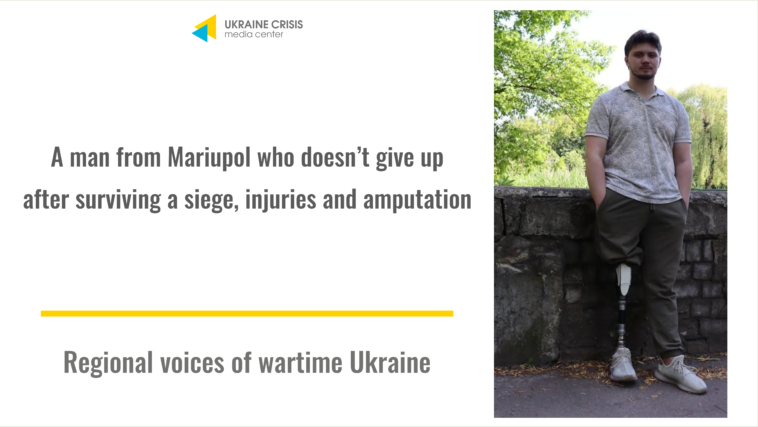Mariupol is an unhealed wound of the Ukrainians. While the city is ruled by occupiers, its residents, scattered all over the world, are trying to learn to live anew. Behind the terrible numbers of the dead, we often don’t see other statistics – the Russians have maimed many people, though not killed them. We don’t know when we’ll find out the more or less exact number of such men, women and children. They often try to cope on their own, and few manage to get help in Ukraine and abroad. Today’s story illustrates how much of a humanitarian disaster remains behind the scenes.
…
February 20, 2022. Mariupol. Vladyslav Beskrovnyi, 25, was about to start a private barber practice. But a few days later, a full-scale invasion would begin. Mariupol would become one of the most tragic pages of the Russian-Ukrainian war, where Vlad as a civilian would go through his personal hell. This would change his life forever.
Driving through the corpses to the hospital
Vlad and his girlfriend Maya didn’t prepare for a big war. They only bought food for a few days and some pet food. For a while, they managed to hold on thanks to the food in the apartment of their neighbors’ who had left the keys to Vlad. But later the boy had to exchange some things for others. Barter became an economic reality of the besieged Mariupol.
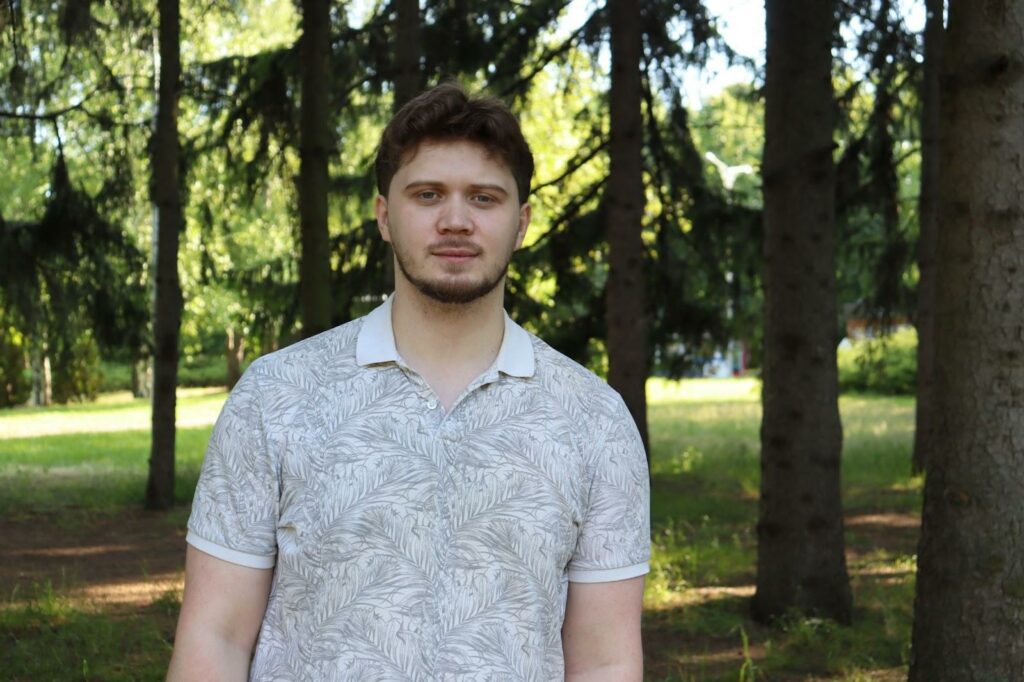
On the day Vlad went outside to exchange some of his supplies, a Russian shell hit the yard. Three people around him were killed instantly. He himself was seriously wounded – one leg was cut by numerous shrapnel fragments, but the worst thing was that an artery was severed in the other.
Maya dragged him to the apartment and injected him with a hemostatic drug, which saved his life. Then she found a driver in an old Moskvich to take the boy to the hospital. While the driver was carefully driving around the corpses on the road, the girl was shouting from the car into nowhere, “Don’t shoot, we’re transporting the wounded!”
Maya left Vlad at the hospital and promised to visit him every few days.
Burn alive or suffocate from smoke
The next day, doctors came to see the boy. One of them asked Vlad to move his toes.
“I did. And then I looked at my legs… The doctor jabbed a needle into my leg. It seemed to me that I was moving my toes, but, in fact, I didn’t feel anything,” Vlad recalls.
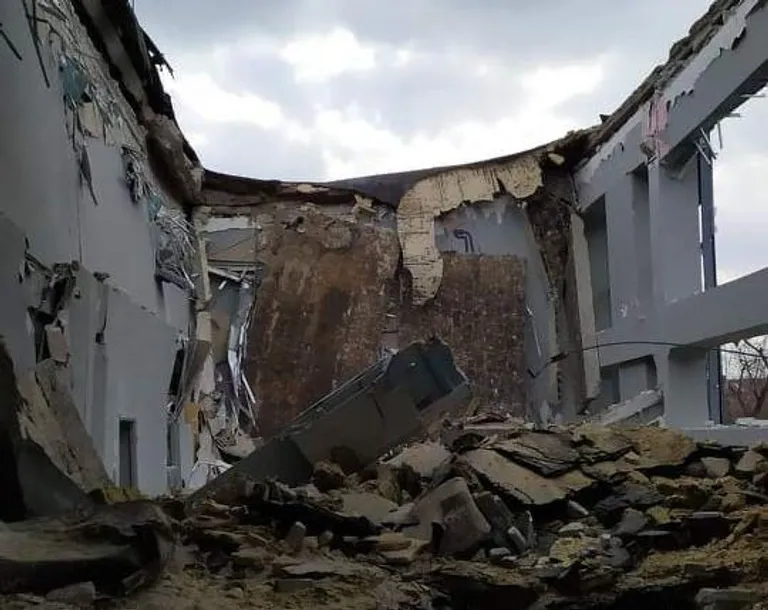
The doctor said that the boy needed an amputation surgery, but he might not survive it. The doctors did their work in very hard conditions and without the most necessary things. So Vlad refused, as he was afraid that he would not have time to say goodbye to Maya. Being in the hospital became another circle of hell for him. Bedridden, the young man, who had been healthy until the day before, couldn’t fend for himself and was almost helpless. He could only rely on the medical staff.
The shelling became more and more intense. Hospitals were the priority targets of the Russian terrorist army. One day, an enemy shell fell outside the wall of his ward, so the medical staff moved all the bedridden into the corridor.
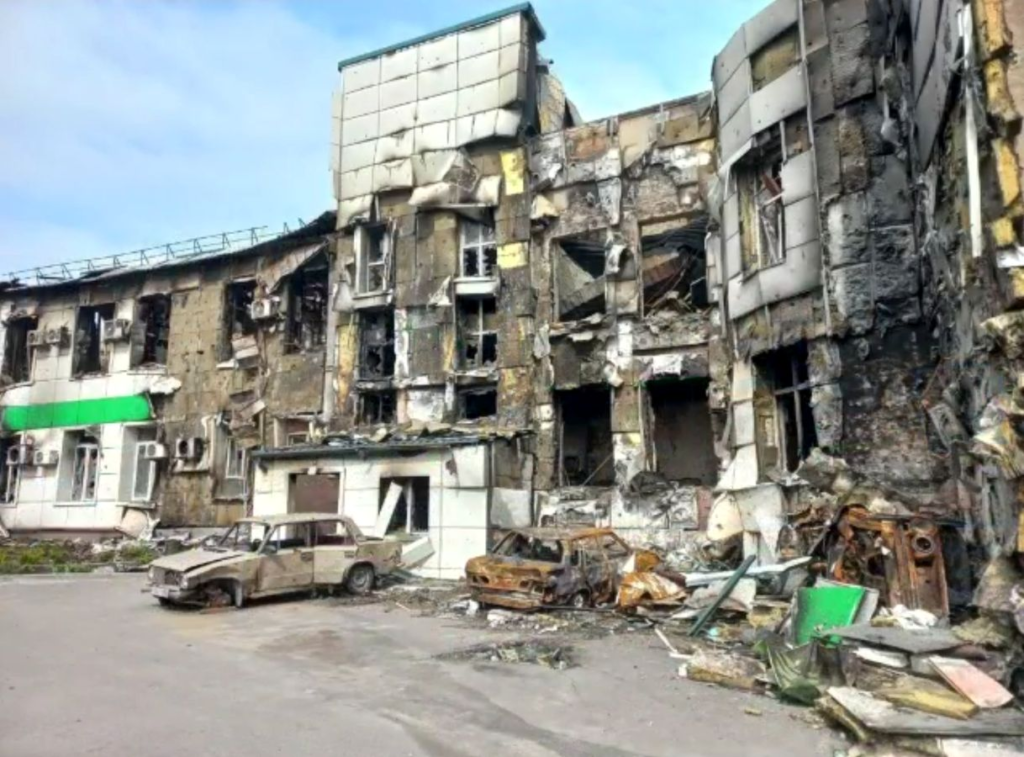
People from Mariupol started coming to the hospital, looking for relatives, friends or just food and medicine. Some of them tried to help Vlad and other bedridden patients by giving them some food or water.
But no one would be able to save them from death in such conditions. One day, Vladyslav recalls, he once again found himself on the verge of death:
“The hospital caught fire. Some of the patients were taken out by those who could walk. I and another bedridden guy were left behind.”
He and the other guy tried to push themselves off the ground with crutches to get to a safer place. It took hours. When the fire died down, the guys felt cold, which they hadn’t noticed before. And they realized that they would simply freeze outside within a few hours. So they had to make the same way in the opposite direction. They found themselves inside the hospital, where there was no one else.
At dawn, Vlad noticed an elderly woman walking past the hospital. She wheeled them down to the basement.
“A leg is not life”
One day, everyone in the hospital began to move quickly.
“I don’t know exactly what time it was. But it was later than 7pm. I asked the woman next to me: “What’s the commotion?” She answered: “Those people have come.” I asked her who exactly. She didn’t say who, only that I would be the first to leave,” Vlad says.
They were Russian soldiers. He was really the first to be put in a “loaf” – an old Soviet car, which Russians still use as an ambulance.
“I was out of my mind.” I kept yelling “scum” because I was in pain, and they didn’t understand I meant them,” the boy says.
Vladyslav was brought to Novoazovsk. He remembers the hospital as a one-story building, more like an ordinary tiny old private Ukrainian hut. Only the color of the walls inside gave away the medical facility – white top, green bottom.
“I called it a studio hospital,” laughs Vlad.
There he underwent amputation. Before the operation, the guy had lost all his strength. He recalls how his wardmate said that Vlad was all white. The guy tried to drink water, but his hands didn’t obey. He woke up without his right leg: the limb was amputated to the groin. This is a high degree of amputation.
Vlad immediately began to look for an opportunity to contact his family. He called his mother. After learning about his injury, she was scared. But Vlad reassured her, saying that a leg is not life, everything would be fine. People who see Russian atrocities only on TV find it hard to understand such optimism. However, these are the realities of Ukrainians, who have learnt over the years that it can always get worse. Unfortunately, there are plenty of irreparable disasters around, against which even losing a leg may seem lucky… The war has raised the pain threshold.
I said “Glory to Ukraine” to a doctor in the “DPR” and he replied “Glory to the heroes.”
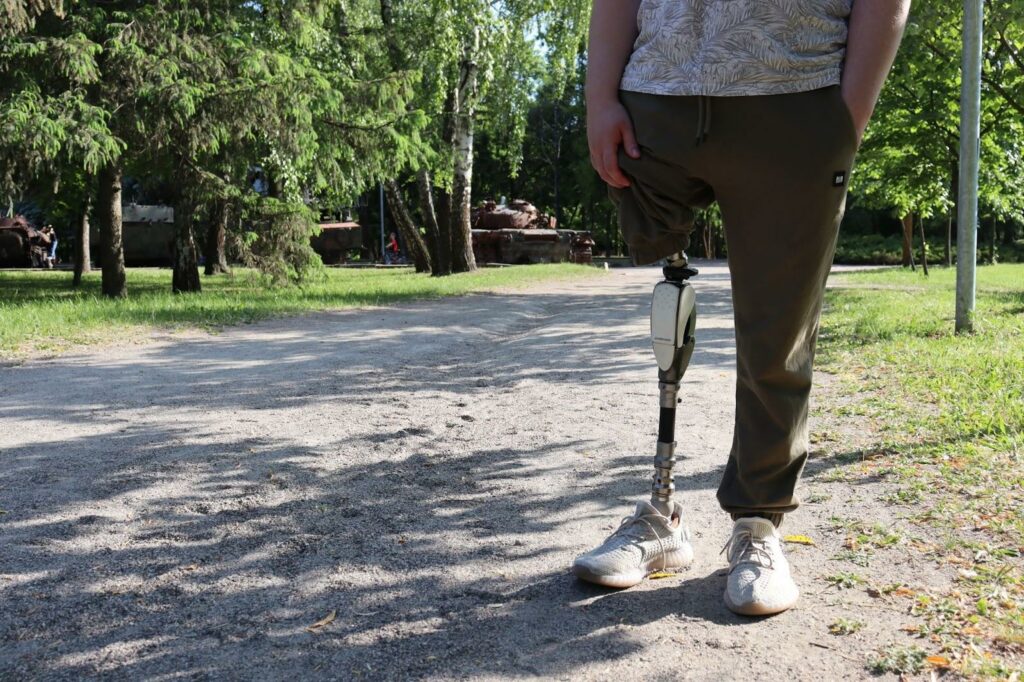
When Vlad was discharged from the “DPR” hospital, he went to see one of the doctors to say goodbye. He put a bottle of alcohol on the table and said, “Thank you for your help. And glory to Ukraine!” The doctor did not hesitate to reply, “Glory to the heroes!”
After his forced treatment in the occupied territory of the Donetsk region, Vlad jokingly calls the so-called “DPR” “DolphiNaRium”. Just like a dolphinarium is a torture chamber for dolphins, this Russian-occupied territory is a place of suffering – but for people.
I didn’t recognize my hometown
Vlad’s girlfriend temporarily settled in Makiyivka. Together they looked for ways to return home. Like the Nazis in the 1940s, the Russians carry out a kind of selection or filtering of people in the occupied territories. During this procedure, thousands of people whom the invaders consider unreliable disappear without a trace. Luckily, the couple managed to go through this inhumane procedure and find a carrier who took them to Mariupol.
“Or rather, to what was left of it. I couldn’t recognize the city,” Vlad admits. They spent two more weeks there until they found an organization that was evacuating people. Vlad, Maya, their dog and cat – the four of them finally left for Zaporizhzhia.
When the Ukrainian military opened the car door and saw Vlad and the stump, they didn’t mince words seeing in which state people were leaving the occupation. The driver took the couple from Zaporizhzhia to Dnipro. There, Vlad and Maya stayed with friends for a week, and then went to Lviv.
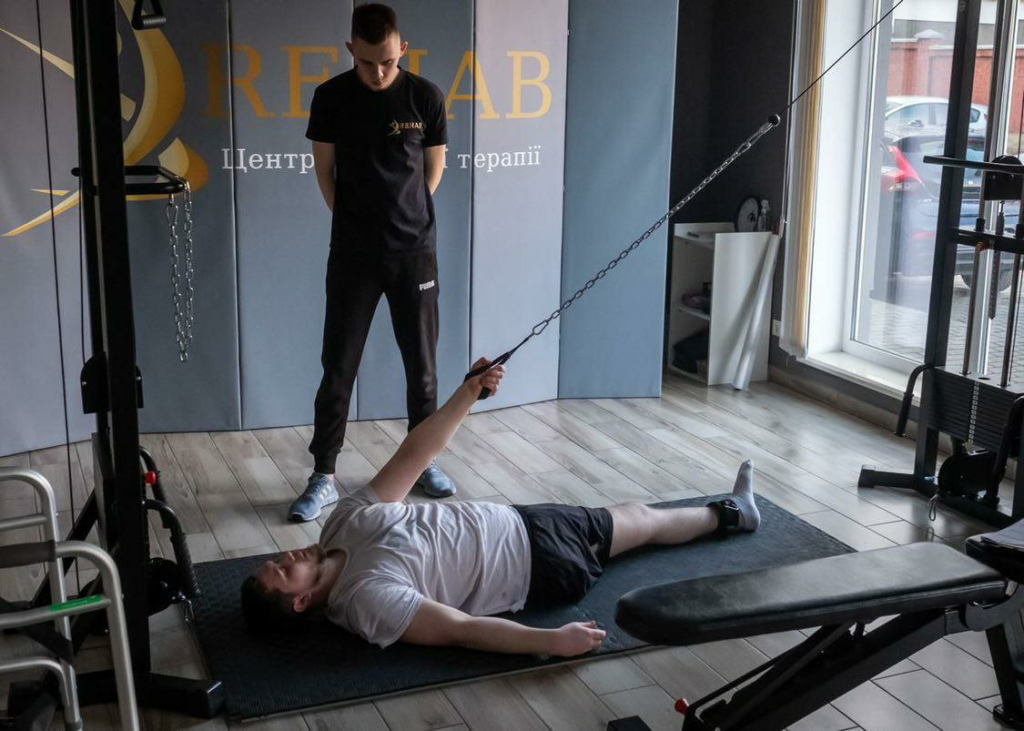
On his in social media pages, Vlad told his story and attached his card number. People sympathized and sent money and information about rehabilitation opportunities. Vlad began to recover with instructors at the Rehab Physical Therapy Center in Lviv, although he had previously tried to move on his own, using chairs as walkers. After several months of rehabilitation, Vlad began to make significant progress.
He learned about the organization Designed to Live, which in Latvia manufactures prosthetic limbs for Ukrainians affected by the Russian-Ukrainian war.
He learned to walk again
Learning to move without prosthesis is one thing. It was also necessary to get used to the artificial leg, although in many respects the process of adaptation to the prosthesis depends on the patient himself.
Specialists said that it would take Vlad at least a few weeks to minimally get used to the prosthesis. But he went home a week later.
“I was so eager to walk on my own again,” Vlad smiles. “It was difficult to get used to walking again. I spent two or three hours with the walker outside every day to get used to it and understand what it was like to walk. The most unpleasant thing was to take the first steps without aids.”
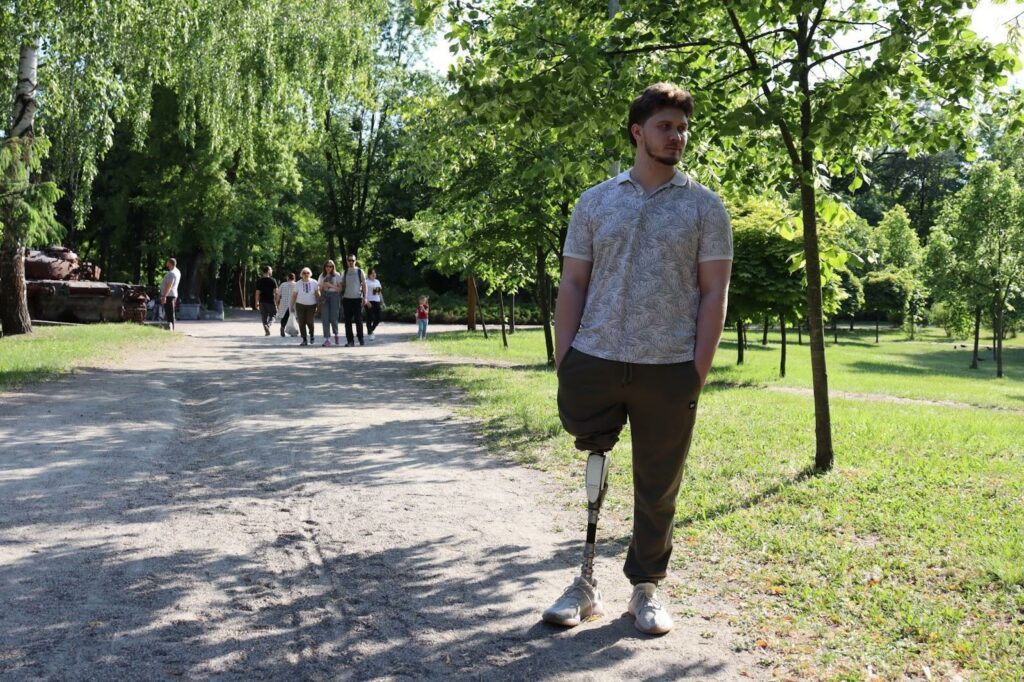
The doctors did not give Vlad any particular forecasts about when he would start walking confidently again.
“It all depends on a person. There was a woman with a milder degree of amputation with me at the rehabilitation. Even in two years, she could not get used to the prosthesis. And it took me about six months. But I can’t move freely yet,” Vladyslav explains.
Soon he is going to go to Latvia again to have some parts of the prosthesis replaced. The thing is that while the patient more or less gets used to the prosthesis and learns to live with it, his weight and physique change, so the prosthesis eventually needs to be replaced.
Vlad was offered to do it here in Ukraine, but he doesn’t want to put an additional burden on the country, where many citizens already need prosthetics.
Now Vlad works in the field of advertising and CEO. He doesn’t think about being a barber, because it requires standing for a long time.
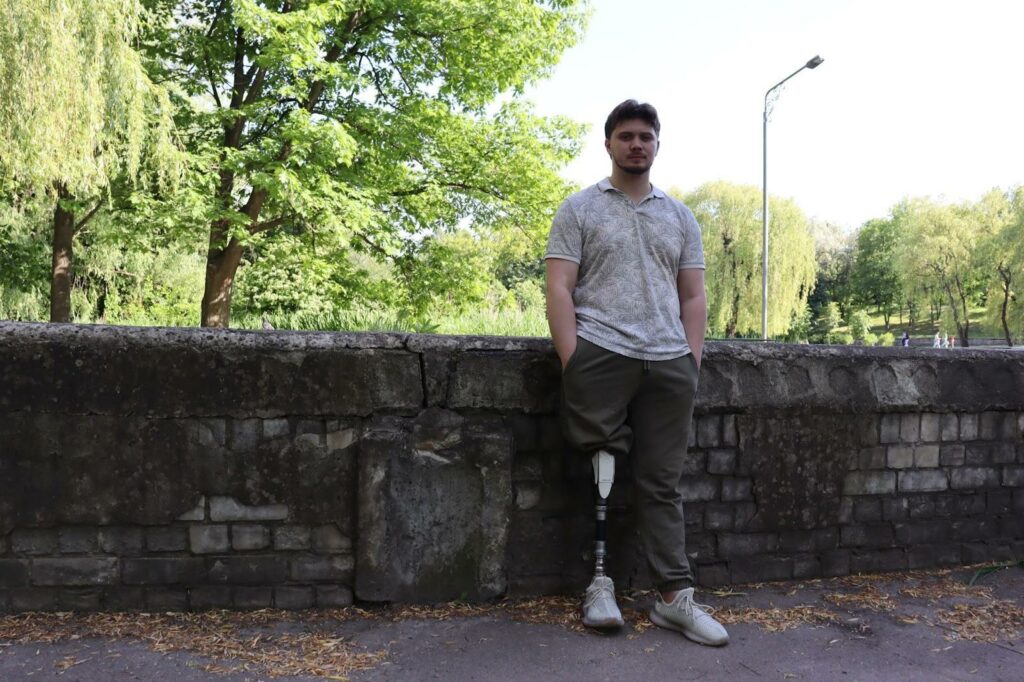
He doesn’t want to return to Mariupol.
“If the city is recaptured, it’ll be very difficult to live in constant fear next to an inadequate neighbor. And the most unpleasant thing is to live where your life was broken and will never be the same again…” Vlad summarizes.
Author: Tetiana Zhuk

